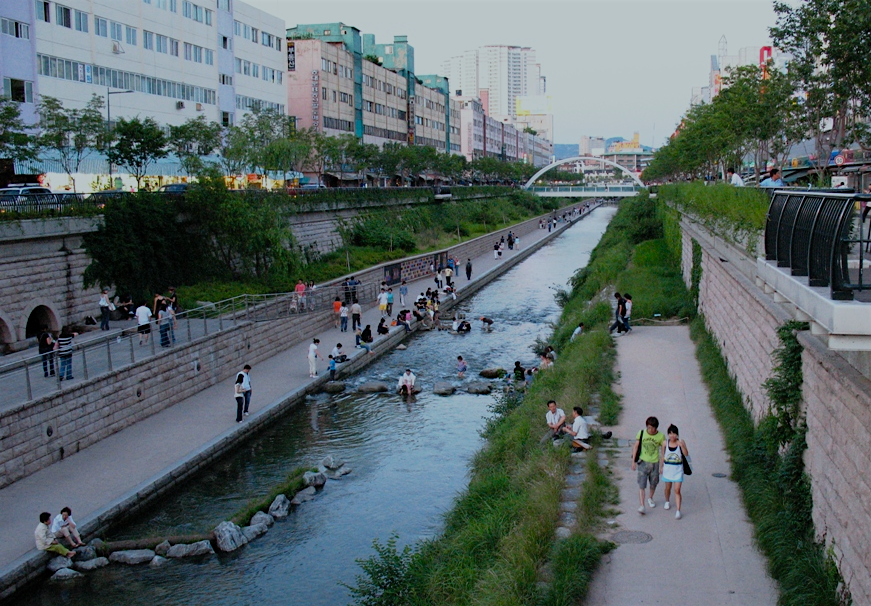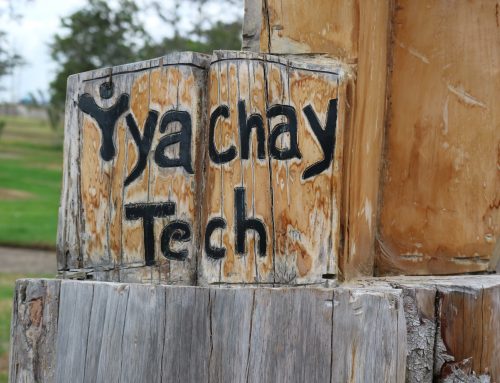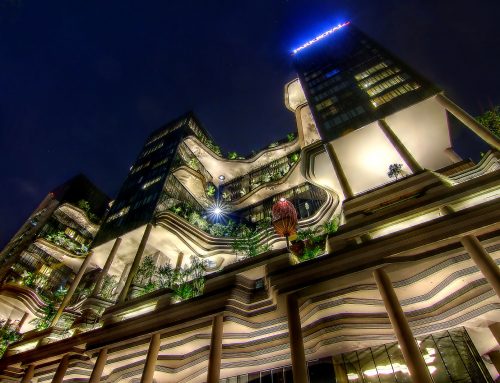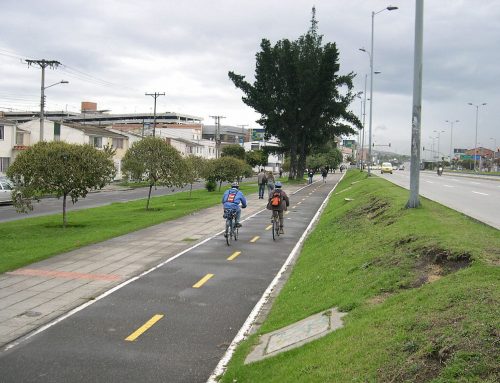How can urban cities be renovated to provide opportunities for their residents to reconnect to nature?
Cheonggyecheon river restoration project in Seoul replaced a highway with urban green spaces and a highly engineered river. The project opened in 2005 and has become popular place for people to visit in Seoul.
The restoration of the Cheonggyecheon aimed to provide people with access to nature in the city as well as to revitalise downtown Seoul’s culture and economy by replacing space for cars with space of pedestrians and nature. An elevated highway was demolished and replaced by a linear park along the reconstructed urban stream.

Cheonggyecheon in downtown Seoul in 2012. Photo by Steve Boland.

Cheonggyecheon in 2013 showing preserved remainders of elevated highway it replaced. Photo by Carlos Felipe Pardo.
Cheonggyecheon is a highly engineered urban ecosystem that cuts through the heart of Seoul. The river is produced not by the flow of water from a watershed, but 120,000 tonnes of water /day are pumped from the Han River and its tributaries, as well groundwater from subway stations.
The artificial river provides visitors and local residents with a number of ecological benefits. It cools areas near the river, keeping them about an average of 3 degrees cooler than surrounding built up areas. The vegetation and running water provide habitat for fish, birds and insects, whose life increases the attractiveness of the river as a small area of green and blue in downtown Seoul that provides a relaxing place to sit, walk, and play.
The highway removal/river restoration project was a catalyst of a revitalisation in downtown Seoul. The restoration helped to better connect the downtown Seoul which had been fragmented by road and highway development. Counter-intuitively, the removal of downtown roads actually decreased traffic congestion around Seoul, and improved local air quality.
The success of the highway removal also promoted further pedestrianisation initiatives around the city, and improvements in the public transportation systems, and helped trigger a number of other highway removals. It also focussed attention on other possible stream restoration projects, and has greatly increased interest in urban river restoration in Korean and international cities.
The project has successfully enhanced opportunity for people to experience living ecosystems in downtown Seoul. It was not a restoration, but the construction of a large piece of green urban infrastructure that was successful in providing people with benefits and inspiring others to think about green infrastructure and people, rather than car focussed, urban development.
More information
How Did Seoul’s Cheonggyecheon River Restoration Get Its Start?The Nature of Cities Podcast Podcast Episode 10
An interview with Dr. Soo Hong Noh, a professor of environmental engineering at Yonsei University, on how a casual chat on a bus nearly thirty years ago led to the improbable removal of a major elevated highway and the restoration of a beloved river in the old city center of Seoul in South Korea.
A case study in the Landscape Performance Series from the Landscape Architecture Foundation – Cheonggyecheon Stream Restoration.
A short video of a walk along Cheonggyecheon.
[youtube https://www.youtube.com/watch?v=W5lRWXdkjTU]
Talks from Professor Joan Busquets and Mr. In-Keun Lee, Assistant Mayor of Seoul on the presentation of 2010 10th Veronica Rudge Green Prize in Urban Design
Green Prize Jury Chairman, discusses the 2010 winner: the Cheonggyecheon River Project in Seoul, Korea. Following the presentation of the award to
[youtube https://www.youtube.com/watch?v=BdU3zkFckKM]



